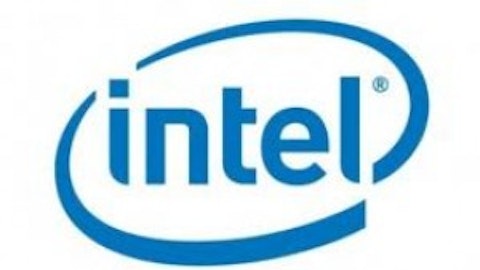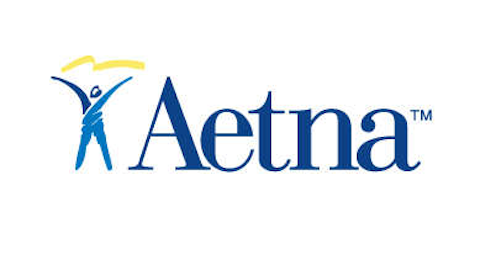If you asked the average person on the street if America is overpopulated and the birth rate is too high, you’d likely receive “Yes” as your answer. However, that answer is wrong. In fact, America is seeing a decline in birth rates and there is now real fear that an aging population may not being having enough children to replace today’s working force. Economically, this is bad and will present a number of challenges in the future. But from an investing standpoint, this demographic shift could prove beneficial to savvy investors, as companies that cater to the mature population stand to benefit from an increasing median age. Here’s what you need to know:

Between 2007-2010, the U.S. birth rate dropped 8% to the lowest it’s been since the 1920s, and the overall birth rate in 2011 was 63.2% per 1,000 women of childbearing age, according to the Pew Research Center. This is in comparison to the overall birth rate in 1957, which peaked at 122.7 births per 1,000 women, to make up approximately 78 million baby boomers.
Additionally, the population aged 18-44 had a growth rate of 0.6% from 2000 to 2010, while the population aged 45-65 grew at a rate of 31.5%, and the population aged 65+ grew at a rate of 15.1%, according to the U.S. Census Brief. These figures increased the median age of Americans to a new high of 37.3 years of age. Moreover, an increasing birth rate of males to females — 105 males to every 100 females — further complicates a declining and aging population.
The problems
There are a number of reasons why the above statistics are concerning. First, the Congressional Budget Office estimates that by 2037 the Social Security trust fund will be exhausted, and that in 2015 Social Security will run deficits through the CBO’s projection of 75 years. This is because between 2010-2030 the number of people age 65 or older is expected to increase 76%, while the number of people working will only increase 8%. The following table shows the breakdown of Social Security. Numbers are expressed in billions of constant 2010 dollars:
| Year | Tax Revenue | Cost | Annual Surplus/Deficit | Cash Flow Surplus/Deficit | Trust Fund Balance |
|---|---|---|---|---|---|
| 2030 | 1,098.20 | 1,365.7 | -152.3 | -267.5 | 1,948.0 |
| 2031 | 1,117.50 | 1,397.3 | -176.9 | -279.8 | 1,718.1 |
| 2032 | 1,137.00 | 1,428.2 | -201.5 | -291.2 | 1,469.8 |
| 2033 | 1,156.70 | 1,458.1 | -225.9 | -301.4 | 1,203.9 |
| 2034 | 1,176.60 | 1,486.7 | -249.8 | -310.1 | 921.3 |
| 2035 | 1,196.90 | 1,514.2 | -273.0 | -317.3 | 623.3 |
| 2036 | 1,217.90 | 1,541.2 | -295.9 | -323.3 | 310.4 |
Source: CRS, based on data from the 2010 Annual Report of the Board of Trustees of the Federal Old-Age and Survivors Insurance and Federal Disability Insurance Trust Funds; August 5, 2010; table VI.F7.
Understandably, the above information is concerning for anyone relying on Social Security for their retirement.
Second, if we examine these statistics in light of what’s happening in Japan — which is further along in terms of a declining birth rate and aging population, we see that the impact on the economy and companies is concerning. For example, Japan has projected that its economy will shrink, and that economic competitiveness and an aging population will hinder innovation and lead to deflation. This, in turn, will create a vicious cycle that will continue to negatively impact Japan, unless incentivizing couples to have more children can reverse it. Unfortunately, this approach isn’t working, as Japan implemented incentives in the 1990s but still continues to face problems.
The same bleak outlook can be seen in Russia and many countries across Europe, particularly Spain, and economists are now warning of a coming catastrophic economic collapse. Some may argue that immigration can, and will, combat this problem — but immigration, even in the U.S. is slowing. Plus, even in places where immigration remains high, there is a decline in birth rates; the birth rate for foreign-born women plunged 14%, according to the Pew Research Center. So what does this mean for investors?
How to benefit
The demographic shift is happening. It has been for some time now, and it will create economic problems in the future. However, by investing in companies that cater to aging consumers, savvy investors can take advantage, and even benefit, from this shift. Two such companies are Johnson & Johnson (NYSE:JNJ) and Pfizer Inc. (NYSE:PFE). Johnson & Johnson (NYSE:JNJ) is a multifaceted company with a number of subsidiaries like DePuy, which specializes in orthopedics and joint replacement products, and Cordis, which specializes in cardiovascular and coronary artery products. Pfizer Inc. (NYSE:PFE) is the maker of Celebrex, one of the most popular rheumatoid arthritis drugs on the market. Joint, heart, and arthritis problems are some of the most common problems associated with old age. As such, the above companies stand to benefit from increased demand from an aging population.
Another option for benefiting from an aging population is to invest in a health care real estate investment trust, or REITs, such as Health Care REIT, Inc. (NYSE:HCN), Omega Healthcare Investors Inc (NYSE:OHI), and Medical Properties Trust, Inc. (NYSE:MPW). These companies invest in properties like retirement homes, independent living, and hospital buildings. Consequently, their consumer base is aging populations, meaning they are naturally set to benefit from increased demand.
Aging Fool
Birth rates are declining, and the population is aging. Without a shift in this trend, the economy could be headed for trouble. But by investing in companies that cater to a more mature demographic, savvy investors can actually benefit from the increasing median age.
The article How to Profit From the Myth of Overpopulation originally appeared on Fool.com and is written by Katie Spence.
Fool contributor Katie Spence has no position in any stocks mentioned. Follow her on Twitter @TMFKSpence. The Motley Fool recommends Health Care REIT and Johnson & Johnson. The Motley Fool owns shares of Johnson & Johnson.
Copyright © 1995 – 2013 The Motley Fool, LLC. All rights reserved. The Motley Fool has a disclosure policy.





